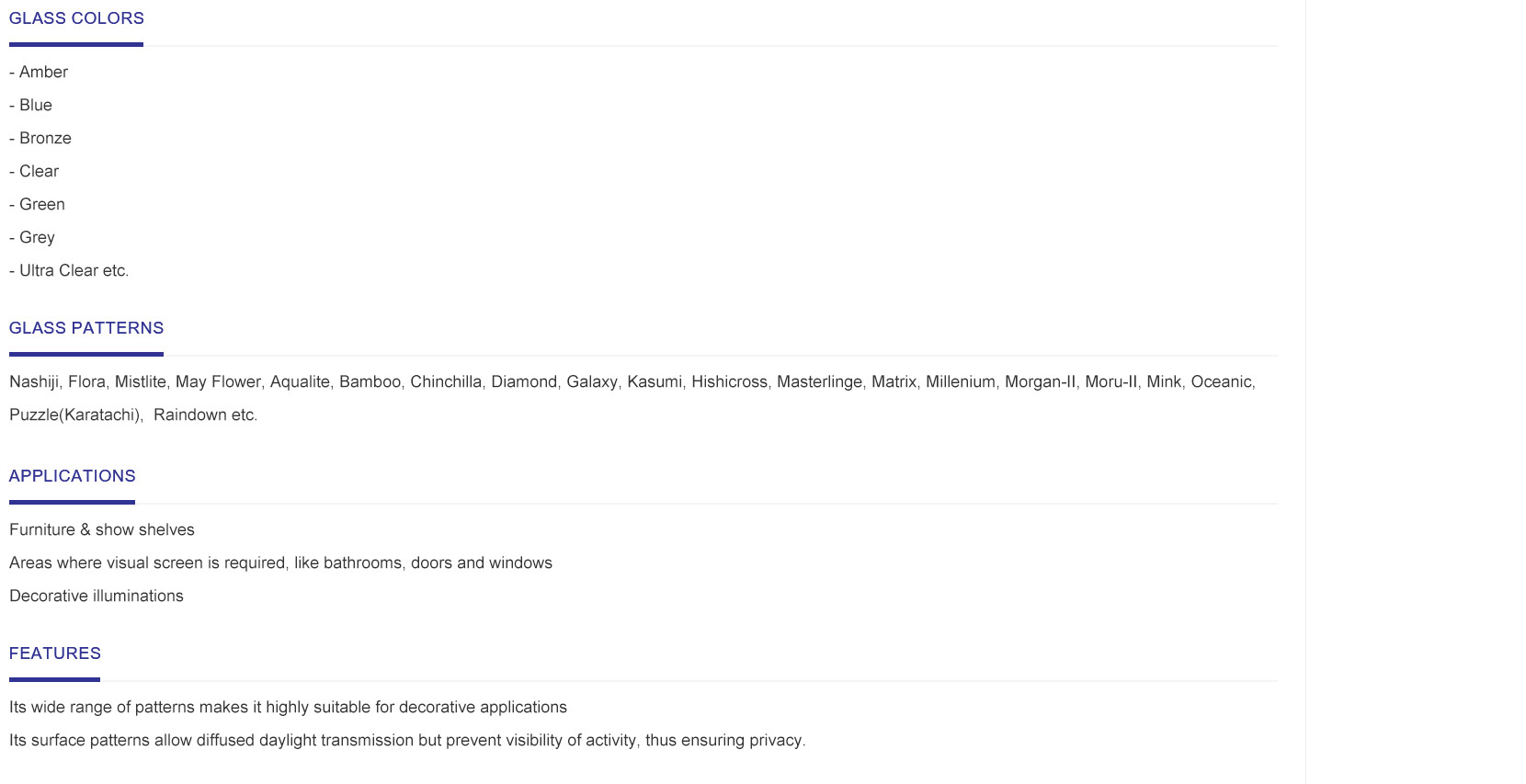

The Benefits and Applications of Tempered Glass
Tempered glass, also known as toughened glass, is a type of safety glass that has been heat-treated to withstand sudden temperature changes and impact. Unlike regular glass, which can shatter easily, tempered glass is designed to break into small, blunt pieces, making it a safer alternative for various applications. In this article, we will explore the manufacturing process, benefits, and common uses of tempered glass.
Manufacturing Process
The production of tempered glass involves a specific heating and cooling process that enhances its strength. Initially, the glass is cut to the required size and shape. It is then heated to temperatures of approximately 620 to 675 degrees Celsius (1,148 to 1,247 degrees Fahrenheit) in a tempering furnace. This process allows the glass to become pliable. Following this, the glass is rapidly cooled using jets of cold air, a process known as quenching. The quick temperature change creates compressive stresses on the surface of the glass, significantly increasing its strength and durability compared to standard glass types.
Strength and Safety
One of the primary benefits of tempered glass is its increased strength. It is roughly four to five times stronger than regular glass of the same thickness. This strength not only protects against impacts but also allows it to withstand thermal stress. As a result, tempered glass can be used in environments where temperature fluctuations or physical forces are prevalent.
In terms of safety, tempered glass is favored in many sectors. In the event of breakage, it crumbles into small, rounded pieces, reducing the risk of injury. This characteristic makes it an ideal choice for applications such as shower doors, glass doors and tables, as well as in windows in high-rise buildings. Moreover, tempered glass is often used in automobile windows for both safety and structural integrity.
Aesthetic Versatility
Beyond its safety features, tempered glass contributes to modern architectural aesthetics. Its clarity and smooth finishes provide an elegant look to various design elements. Architects and designers frequently incorporate tempered glass into facades, balustrades, and partitions to create light-filled spaces while maintaining safety standards. The availability of various tints and textures further enhances its versatility, allowing it to integrate seamlessly with different architectural styles.
Applications in Various Industries

Tempered glass has found its way into numerous industries due to its properties
2. Automotive In vehicles, tempered glass is used for side windows and back windows. Its strength and safety features help protect passengers during accidents.
3. Home Furnishings From tables to shelves, tempered glass is a preferred choice for home decor due to its durability and aesthetic appeal.
4. Electronics With the rise of smart devices, tempered glass screens are commonly found in smartphones and tablets to resist scratches and breakage.
5. Appliances Oven doors are often made of tempered glass to withstand high temperatures without breaking, ensuring safety in the kitchen.
Environmental Considerations
In today's eco-conscious landscape, tempered glass is often chosen for its environmentally friendly qualities. It is fully recyclable, and its energy efficiency can contribute to the overall energy performance of buildings. When installed in windows, tempered glass can help in reducing heating and cooling costs, making it a wise choice for energy-efficient designs.
Conclusion
In conclusion, tempered glass offers an array of benefits that enhance safety, durability, and aesthetic appeal in various applications. Its manufacturing process, which emphasizes strength and stability, allows it to fulfill critical roles in construction, automotive, electronics, and more. As innovation continues to drive the glass industry forward, tempered glass will undoubtedly play a significant role in creating safer and more beautiful spaces for years to come. With its blend of strength, safety, and style, tempered glass will remain a vital material in our modern world.